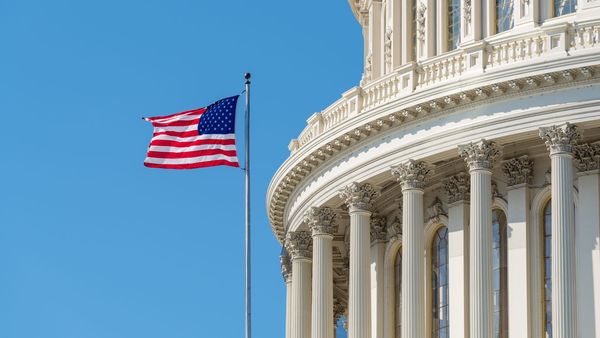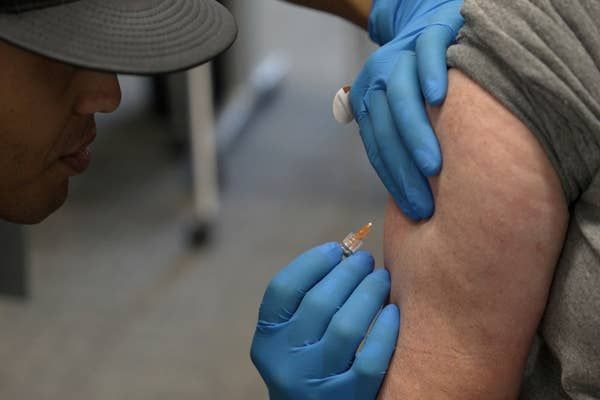
Last August Federal Reserve Chairman Jerome Powell warned Americans that taming inflation, which was running at the fastest pace in four decades, would "cause some pain" for consumers and businesses.
Most people assumed Powell was bracing the nation for a spike in unemployment, which had been hovering at the lowest levels in 50 years, and a near-term recession. He suggested that those conditions would be byproducts of the higher interest rates needed to bring inflation back to the central bank's 2% target.
Don't Miss: Inflation at 2-Year Low, Consumer Prices Ease, After Fed Rate Hikes
Well, the Fed has lifted rates by five percentage points over the past year, speeded the sale of bonds from its swollen balance sheet, and scrambled to address a regional banking crisis that it was worried would cripple loan and credit markets.
Treasury Secretary Janet Yellen, meanwhile, played with the nation's books to keep the government lights on. Lawmakers had dragged the debt-ceiling debate into the final hours toward a deadline that Yellen said could trigger a "catastrophic" U.S. default.
Less than a year later, none of the pain that the Fed or, for that matter, the Treasury cautioned about appears to have manifested.
Joblessness Unchanged, Inflation Below Forecasts
Unemployment, which was sitting at 3.6% in June 2022 -- when inflation hit its 40-year peak of 9.1% -- held firm at 3.6% last month. Inflation slowed to 3%, below Wall Street forecasts and the slowest pace of price increases since 2021.
The economy, widely predicted to slide into recession over the first half, grew at a 2% pace over the three months ended in March and is currently expanding at a 2.3% clip, according to data from the Atlanta Fed's GDPNow forecasting tool.
More than 4.2 million jobs have been added to the economy since June of last year, and stocks rode their best first-half winning streak since 2018. The S&P 500, in fact, is just 6.8% from its all-time peak, and tech stocks haven't had a better first half since 1983.
It's worth adding, of course, that all of this has been achieved amid Russia's horrifying invasion of Ukraine, ongoing oil-production cuts from the OPEC cartel -- which have kept global oil prices artificially inflated -- and a Chinese economy suffering from a post-covid malaise that continues to threaten the country's near-term growth prospects.
Irrespective of your political beliefs, it's an amazing set of achievements for President Joe Biden's economic ambitions -- a neologism dubbed "Bidenomics" -- as the country moves toward next year's election cycle.
"Guess what? Bidenomics is working," the president said late last month in a speech in Chicago. "When I took office, the pandemic was raging and the economy was reeling. Today the U.S. has the best post-covid growth rate in the world."
Americans Are Skeptical and Risks Still Loom
He may be right, but not many people believe him: Current polls suggest two-thirds of Americans think the economy is getting worse, not better, and nearly the same amount say they disapprove of the way Biden has handled it.
The nation's recession, while not yet materializing, is still a looming risk. Bond markets continue to flash warnings of contraction, sentiment in the manufacturing sector is weakening, the housing market has bottomed (with mortgage rates near a two-decade high) and gas prices holding above $3.50 a gallon, nearly $1 more than the average under the four years of President Donald Trump.
All those factors could combine to tip the economy into recession next year, just as Americans begin the months-long process of choosing their next president.
Meanwhile, the Fed's inflation-fighting effort continues, with at least one more rate hike firmly in the cards for its policy meeting later this month. A quarter-point increase would take the federal-funds rate to between 5.25% and 5.5%, the highest since 2007.
The Fed's early policy error is likely to come under increasing scrutiny as well. In April 2021, when interest rates were still at 0%, Powell famously told markets that post-covid inflation pressures would be "transitory" and would not likely require significant rate hikes to control.
The consumer price index quickly accelerated, from 2.6% to 4.2% the following month, and didn't peak until the 9.1% print in June 2022.
The Fed, however, waited nearly a year to begin raising rates and didn't begin selling bonds from its $9 trillion balance sheet until summer 2022.
The U.S budget deficit, meanwhile, is more than $400 billion above last year -- standing at $1.165 trillion at the end of May -- with government outlays up 20%, to $548 billion, thanks mostly to entitlement spending.
Should those conditions extend into next year, they surely won't help the president's economic message.
But with that said, he can make sincere -- and verifiable -- claims that his efforts to fight inflation, while protecting American jobs, have been an unexpected success.
Action Alerts PLUS offers expert portfolio guidance to help you make informed investing decisions. Sign up now.







